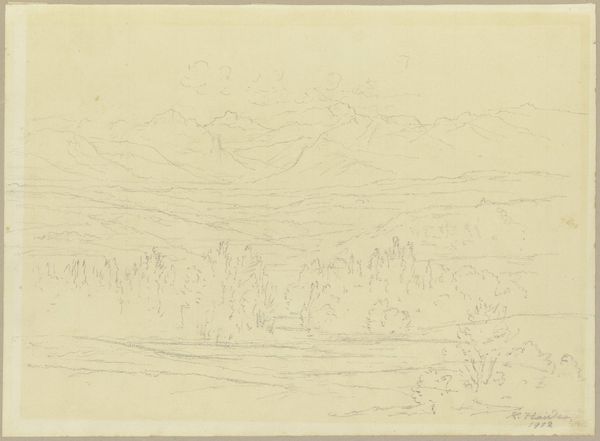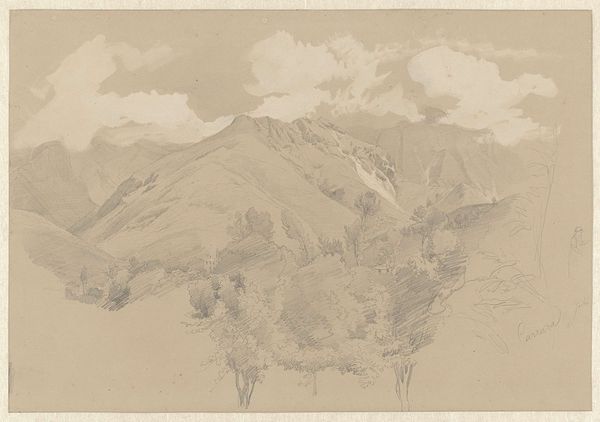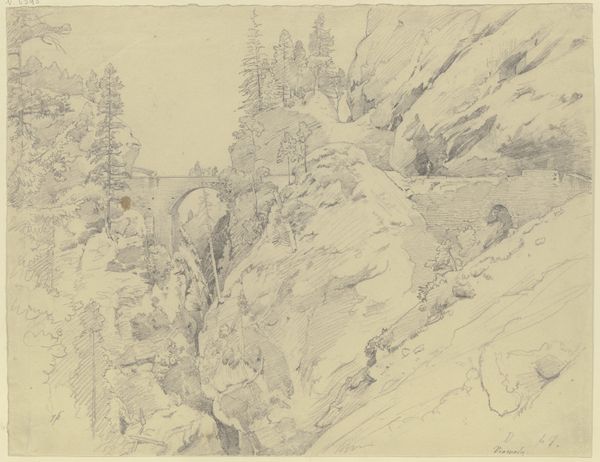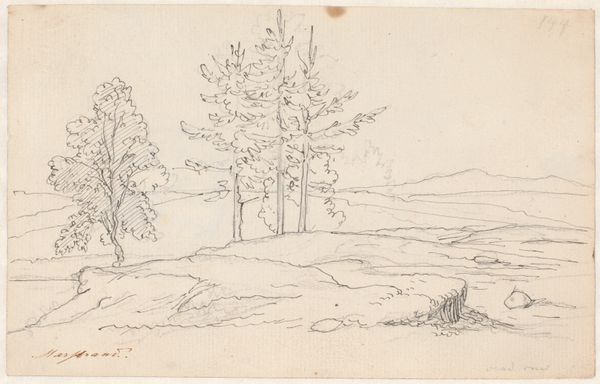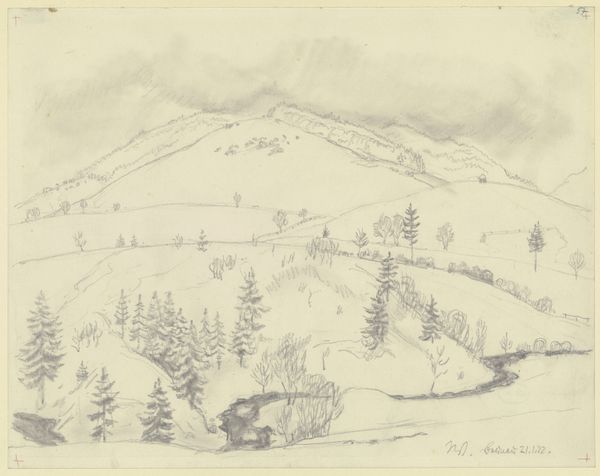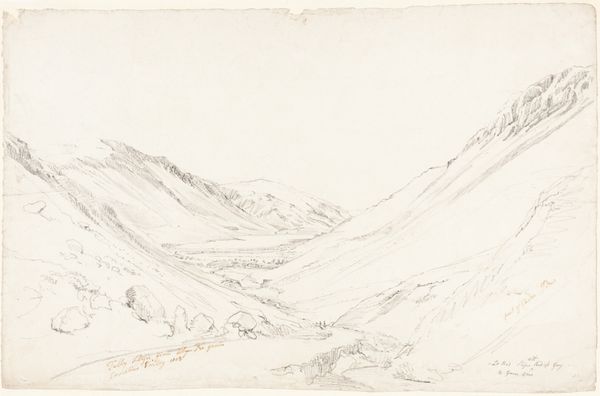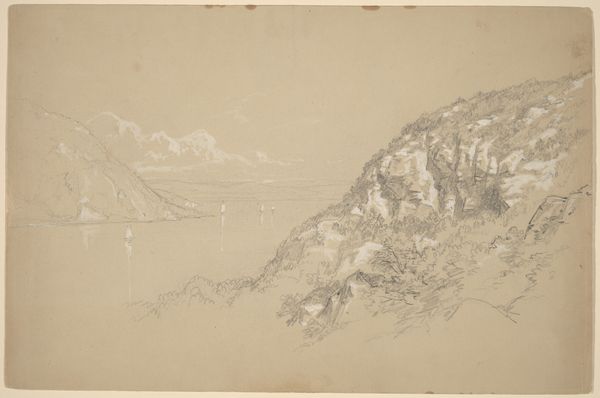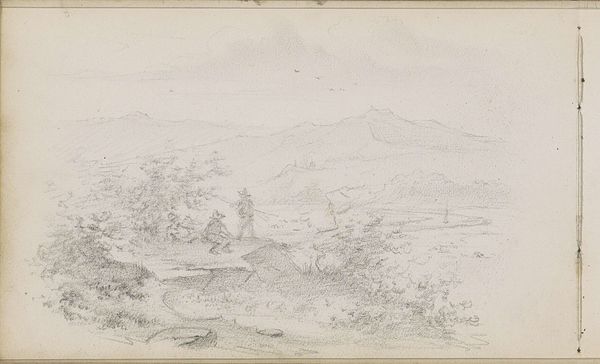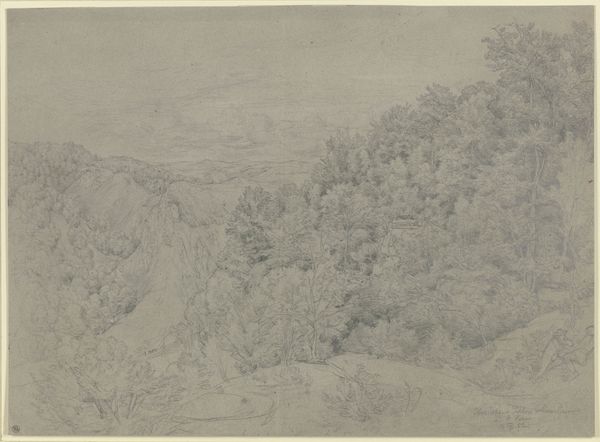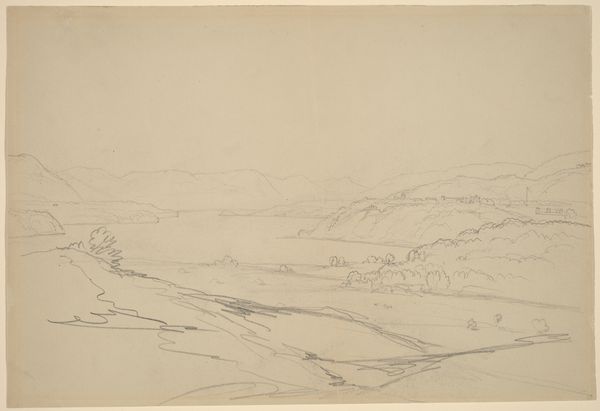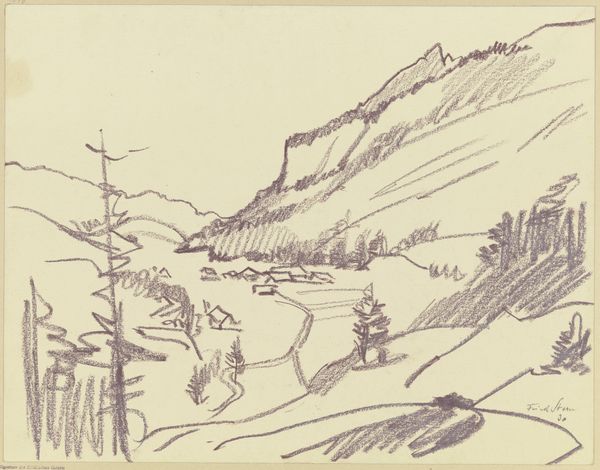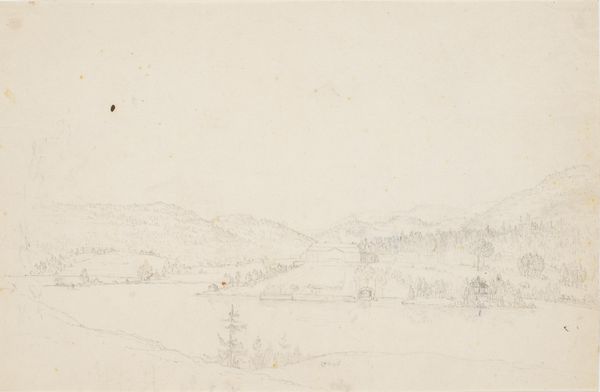
drawing, pencil
#
drawing
#
landscape
#
etching
#
romanticism
#
pencil
#
realism
Dimensions: sheet: 25.4 × 35.24 cm (10 × 13 7/8 in.)
Copyright: National Gallery of Art: CC0 1.0
Curator: Here we have "Mountain Landscape," a drawing by John William Casilear, likely created in the late 19th century. It appears to be rendered in pencil, showcasing a serene mountain vista. Editor: There’s an immediacy to it. Despite being a landscape, I find myself focusing on the rugged textures and shadows of the foreground. It gives the entire scene a grounding weight. Curator: The layering of the mountains is fascinating from a structural point of view. Note how the artist employs a progressively lighter touch, moving from the detailed foreground to the almost ethereal peaks in the distance, a sophisticated rendering of depth through line. Editor: That use of shading gives the work a spiritual dimension for me, something sublime, almost otherworldly. Mountains, culturally, are powerful symbols—places of refuge, enlightenment, and encounter with the divine. I sense a searching quality here, reflected in the sheer scale and detail rendered by Casilear, particularly the small figures barely visible in the center. Curator: Those diminutive figures are strategically placed. By scaling down the human form, Casilear emphasizes the monumentality of nature itself. We observe not only representational depth but conceptual depth as well. Consider also the careful rendering of those pine trees—vertical, structured, creating almost graphic anchoring points on either side. Editor: Exactly! The placement of those details—the trees and small travelers—seems deliberately positioned to evoke contemplation and a connection with a higher, almost transcendental power in nature. Think of the artistic movement of Romanticism and the concept of the sublime. Curator: A well observed visual articulation of space using formal means: texture, line, tone—an example of masterful balance and control over visual information. Editor: In sum, a seemingly simple sketch that subtly reminds us of our own transient place within a much larger and lasting natural and, perhaps, even spiritual world.
Comments
No comments
Be the first to comment and join the conversation on the ultimate creative platform.
